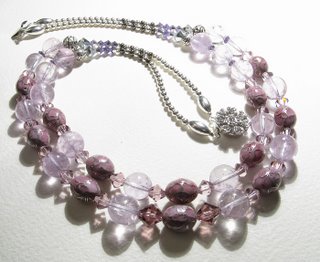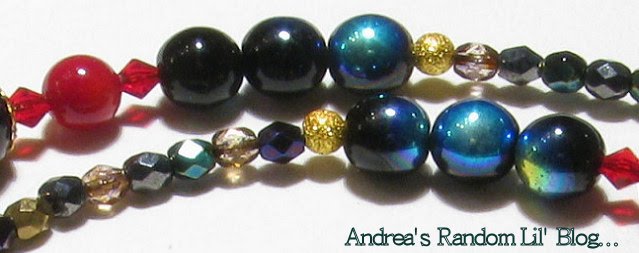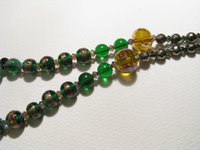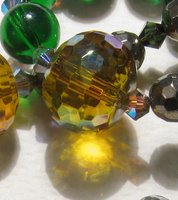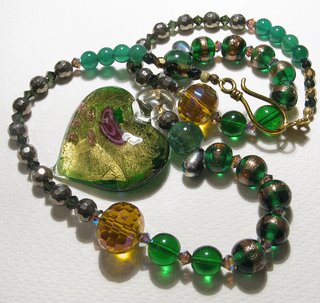Benifuji is a pale wisteria purple. The name means "crimson wisteria", but may also refer to the wonderful sight of Mount Fuji at sunset. As a colour, it is pale purple, with red/pink undertones. A "warmer" shade of purple, rather than than the usual cooler, bluish tinges that we associate to the colour.
You may visit the NHK blog, which was also an inspiration for this piece. On this blog - exclusively dedicated to Mount Fuji - you will see different views of Fuji Sama at different times of the year by wonderful photographers. A gem of a blog, really, and more than worth a visit.
As a flower, the wisteria (fuji) looks like a flowy cascade of purple petals (look at it here), and I tried to portray that using two strands of crystals, amethysts and Chinese cloisonnée beads. Here is the result:

The materials are:
- Several Chinese cloisonnée oval beads in rosy lilac, light purple with silver threads;
- Several medium light Brazilian amethyst beads;
- Swarovski bicones in different sheades of purple and various sizes and effects;
- Tiny silver-plated and blackened silver ball spacers;
- Two silver-plated rice-shaped beads and four Tibetan silver round spacers;
- One double-strand Swarovski clasp with clear crystal embedded.
Some details next...


Close-up of the silver-plated Swarovski clasp, clipping style, and also the lovely Brazilian amethyst beads. These are quite unusual, due to their light, pale tint and exceptional transparency. In Japanese, amethysts are very appropriately called "murasakizuishou" (from Murasaki = Purple and Suishou = Crystal, thus "Purple Crystal").
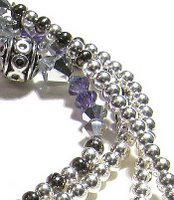
A detail of the smooth Chinese cloisonnée beads with silver thread and some of the Swarovski lilac bicones I used between beads. On the 2nd picture, more Swarovski bicones in other violet colours and effects, along with the silver-plated balls and Tibetan spacers used.
My only complaint about working with this kind of cloisonnée beads is that they are hollow, not drilled like a regular solid bead. So, being hollow makes it harder to string it, for sometimes the wire gets "lost" inside the bead and it takes some time for me to find the way out! I may take from 2 seconds to 5 minutes to string one single bead like that! I love cloisonnée, but dread them at the same time.

